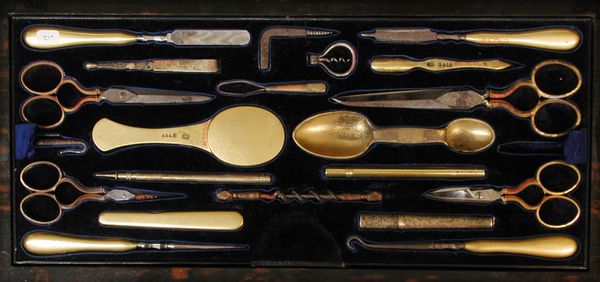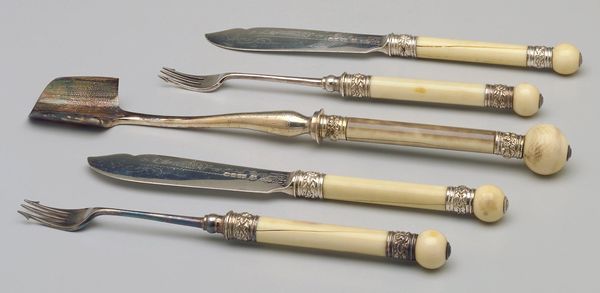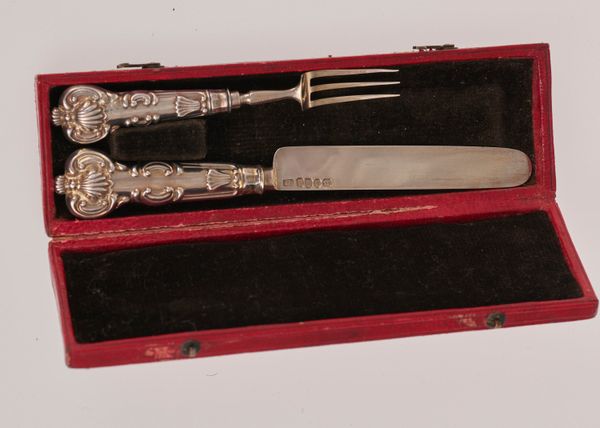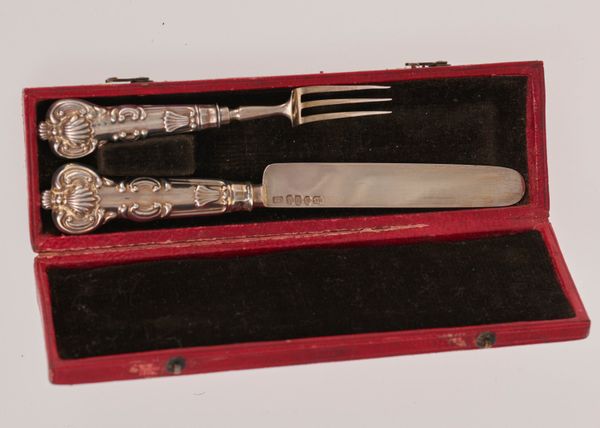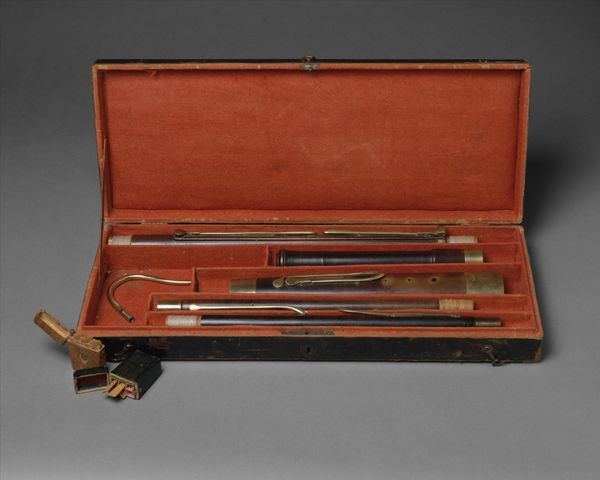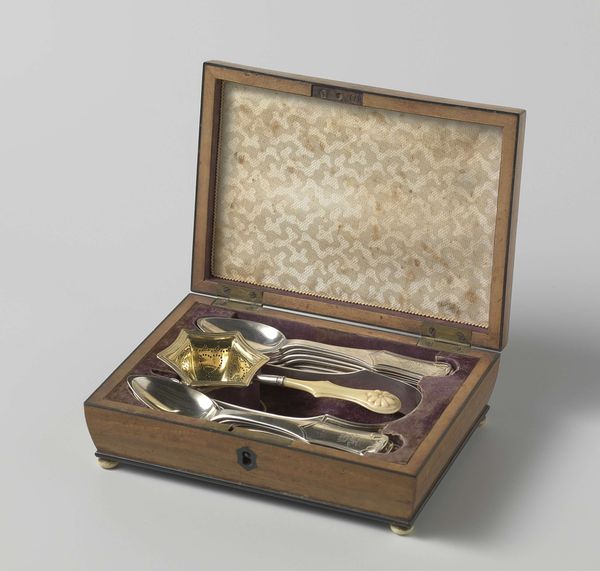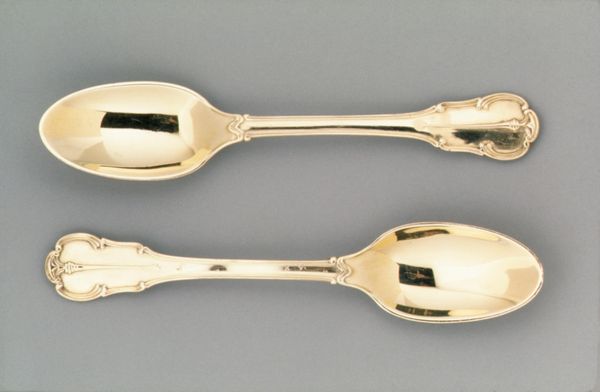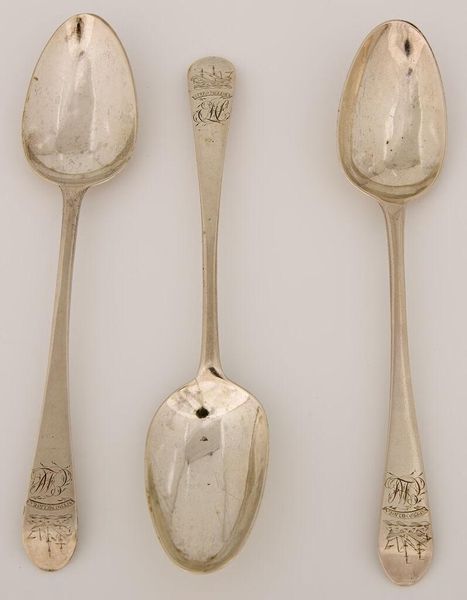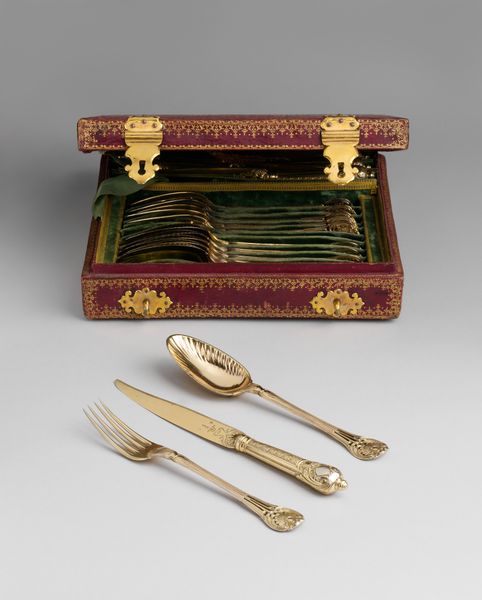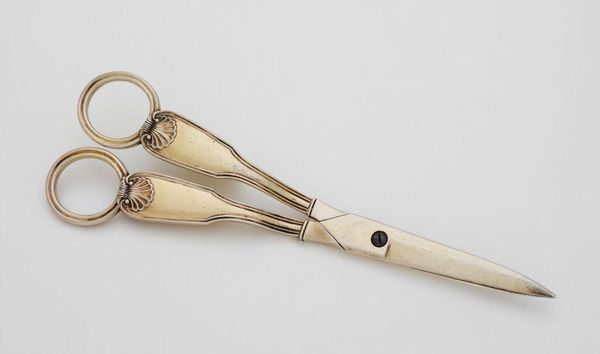
mixed-media, metal, gold, sculpture
#
portrait
#
neoclacissism
#
mixed-media
#
metal
#
sculpture
#
gold
#
sculpture
#
decorative-art
#
miniature
Dimensions: Overall (Case (a)): 2 in. × 8 1/4 in. × 3 11/16 in. (5.1 × 21 × 9.4 cm); Length (Scissors (b)): 4 in. (10.2 cm); Length (Quill (c)): 2 3/16 in. (5.6 cm); Length (Pencil (d)): 3 5/8 in. (9.2 cm); Length (Bodkin (e)): 2 1/2 in. (6.4 cm); Overall (Thimble (f)): 1 × 7/8 in. (2.5 × 2.2 cm); Length (Étui (g)): 3 1/4 in. (8.3 cm); Length (Scent bottle (h)): 2 7/8 in. (7.3 cm); Length (Ribbon spools (i–l)): 7/8 in. (2.2 cm); Diameter (Silk spool (m)): 1 in. (2.5 cm); Length (Stiletto (n)): 3 1/2 in. (8.9 cm)
Copyright: Public Domain
Curator: Here we have a "Nécessaire," a sewing and vanity kit created between 1810 and 1820, now residing at the Metropolitan Museum of Art. It's attributed to Tahan and features mixed media construction, incorporating metal and gold elements. Editor: My first thought is that this is ridiculously opulent! It’s like someone decided everyday mending needed a serious upgrade. I bet that set probably cost more than a house back then. Curator: Exactly! These "nécessaires" were luxury items, popular amongst the aristocracy, particularly in the Neoclassical period. They represented not just utility but a refined sensibility. They highlight the owner's elevated social position and taste, often commissioned as presentation pieces to royalty and visiting dignitaries. The objects it holds would speak volumes of not only the personal but the societal expectations around gender roles in this historical frame. Editor: A fancy toolkit as a symbol of status. It makes you think, doesn't it? Were they actually sewing, or just showing? Curator: Probably a bit of both. The functionality is undeniable – note the individual slots. But its aesthetic value cannot be ignored either. Gold detailing and the precise arrangement point toward it's high-end production for an elite consumer base. Editor: Looking closely, it's the miniature aspect that gets me. It's a contained universe of domestic skills in a jewel box. I see tiny, glinting perfection... kind of ironic, considering the messy realities of mending a torn frock. Curator: These luxurious sets offered a chance for the patrons of decorative arts, not only in France, to support craft guilds that served their interests, but were collected and shown widely on display as signifiers of their participation and sophistication with aesthetic practices of consumption, exhibition, and display. Editor: It makes you ponder on craft, labor, and the lives intertwined with these objects. Were these ever genuinely used, or simply placed as decorative items in parlors, as indicators of wealth? What did they think? The precision feels…clinical almost. Curator: By contextualizing "Nécessaire" within its historical landscape, we reveal not only artisanal prowess, but illuminate the socioeconomic strata and cultural values encoded within the material culture of the time. Editor: Absolutely! It’s like peeking into another world… one where even fixing a ripped seam required its own luxurious ceremony. Curator: Indeed, revealing it as more than mere art; it's a time capsule, isn't it? Editor: Exactly. And the time capsules don't come much shinier, or as reflective, as this.
Comments
No comments
Be the first to comment and join the conversation on the ultimate creative platform.
